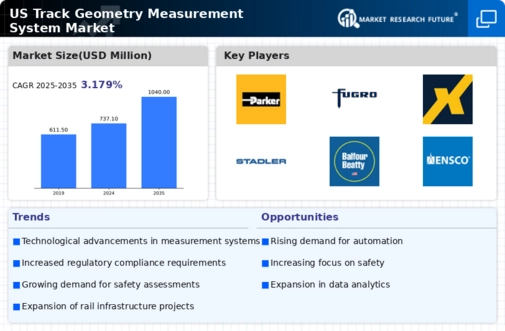The US Track Geometry Measurement System Market has become increasingly competitive due to the necessity for rail operators to maintain safety, efficiency, and compliance with industry standards. With advancements in technology and the growing demand for precise track measurements, various companies have established their presence in this dynamic market. Key players are continuously innovating their offerings and enhancing their technological capabilities to stay ahead. The competitive landscape is characterized by collaborations, mergers, and acquisitions, as companies strive to improve their market positioning and expand their service portfolios.
As rail infrastructure continues to evolve, the ability to provide reliable, accurate, and efficient track geometry measurement solutions will determine success in this market. L.B. Foster Company stands out in the US Track Geometry Measurement System Market with its extensive experience and robust product offerings. The company is known for its commitment to high-quality engineering, providing advanced solutions that cater to the specific needs of rail operators. L.B. Foster Company's strengths lie in its reputation for reliability and excellence in customer service, attracting a loyal client base.
The company’s strategic partnerships and ability to innovate are significant factors that contribute to its competitive edge. Furthermore, L.B. Foster Company has effectively leveraged its established market presence to expand into new geographic regions while enhancing its technology, thus reinforcing its commitment to serving the rail industry. Parker Hannifin has developed a strong foothold in the US Track Geometry Measurement System Market through its innovative approach to measurement technology. The company is recognized for its integration of precision engineering with cutting-edge sensor technology, enabling accurate track monitoring and safety assessments.
Parker Hannifin offers a comprehensive array of products and services tailored to the rail industry, including automated measurement systems and data analysis tools, enhancing operational efficiency for rail operators. The company's focus on research and development further strengthens its market position, as it continuously evolves its product line to meet emerging industry needs. Parker Hannifin’s strategic mergers and acquisitions have also contributed to its capacity to deliver a broader range of solutions, reinforcing its competitive advantages while ensuring a seamless integration of capabilities within the US rail sector.

















